1. Baidyanath Dham, Deoghar
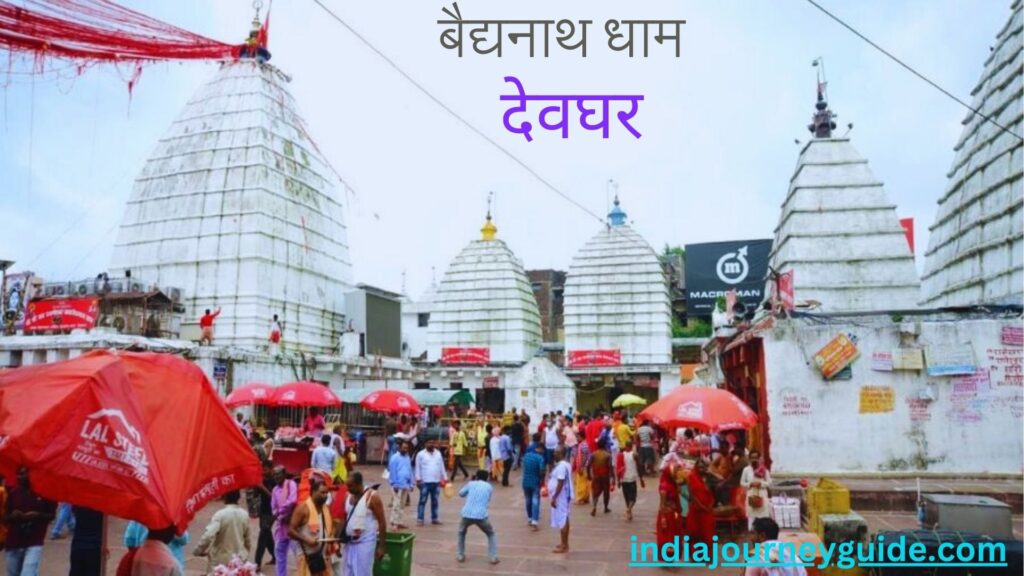
Overview of Baidyanath Dham, Deoghar
The Baidyanath Jyotirlinga temple, also known as the Baidyanath Dham, is one of India’s twelve Jyotirlingas, and it is regarded Lord Shiva’s most sacred sanctuary. Situated in Jharkhand’s Deoghar division, the expansive and splendid temple complex consists of twenty-one other noteworthy and exquisite temples in addition to the main Baba Baidyanath temple, which is the location of the Jyotirlinga.
Every year during the Shravan mela, millions of devotees flock to Baba Baidyanath Dham Temple. They transport water to the temple from the Ganges River, which is located 108 kilometers distant, making it particularly magnificent. There are rumors that the devotee line stretches the entire 108 km uninterrupted!
2. Trikuth Parvat
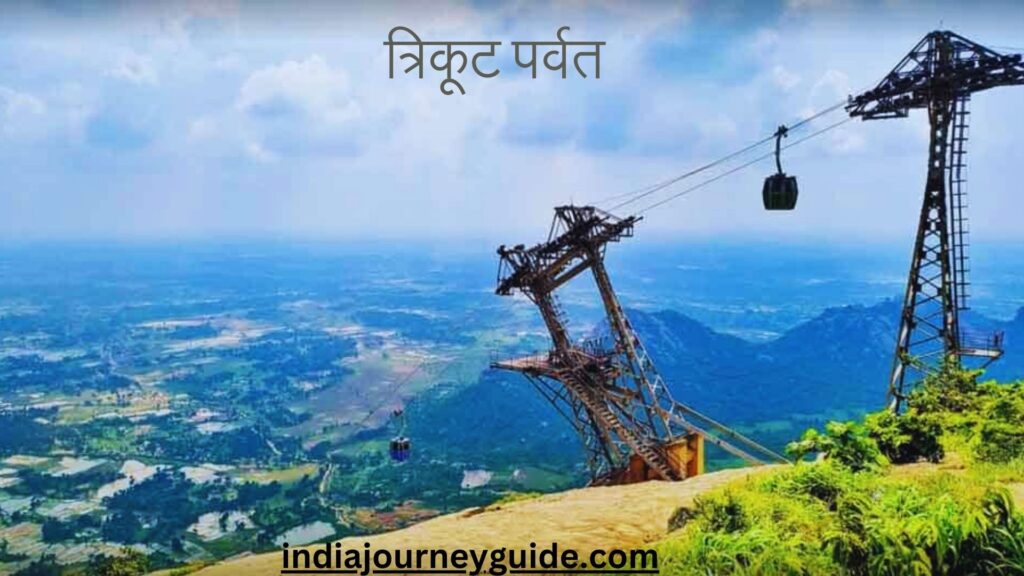
Overview of Baidyanath Dham
Trikuth Parvat is a hill located 13 kilometers from Deoghar on the road to Dumka, with three main peaks from which it derives its name, Trikutachal. The hill is 400 meters (1,350 ft) high. Here are also an altar dedicated to the goddess Trishuli and a Shiva temple called the Trikutachal Mahadeva Temple. The first ropeway in Jharkhand was constructed there by the Kolkata-based Damodar Ropeway and Construction Company. The “Trikutachal Ashram” is situated at a height of 1000 feet. It was established by Param Pujya Sri Sri Swami Sampadananda Gurumaharaj, also known as Yadav Chndra Chakravorty, who lived from 1899 to 1987.
Yadav was born in Roshan Giri, Bangladesh, and became a disciple of Thakur Dayananda. In 1924, he came to Trikuth Parvat to live in a small cave on the hill and meditated for 50 years. The Yogi is visited by villagers seeking his benediction. The Trikut Ashram was built gradually, starting with modest dwelling quarters for the disciples to spend the night in. In 1952, Mother Bhakti Prava Devi arrived at the Trikut Ashram with her parents and met Swami Sampadananda. She became a nun in 1977 and made her permanent home at the Trikut Ashram. After being initiated in 1987 and becoming a Sannyasi (monk), Sri Chandan Swami is currently in charge of the Ashram’s daily operations.
3. Basukinath Temple, Deoghar
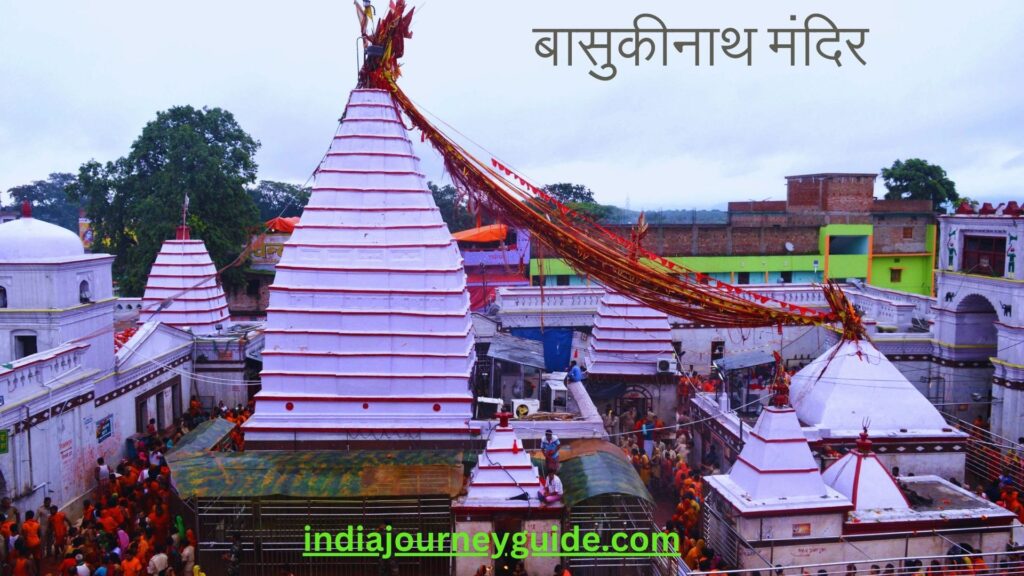
Overview of Basukinath Temple
Basukinath is a renowned Hindu pilgrimage site in Jharkhand’s Dumka district, accessible via the Deoghar-Dumka state route. Without a question, the most well-known feature of Basukinath is the temple itself, which attracts millions of pilgrims annually from all across the nation to worship the temple’s presiding deity, Lord Shiva. The month of Shravan sees a sharp rise in the number of visits to the majestic temple, including both domestic and foreign visitors.
Most people think that Baba Bhole Nath’s court is located in the Basukinath Temple. In the Basukinath Temple, the shrines dedicated to Shiv and Parvati are situated directly in front of one another. It’s said that Lord Shiva and Mata Parvati first meet when the gates of these two temples open in the evening. As a result, worshippers are urged to avoid the temple’s front gates. Within the property are other smaller temples devoted to various Gods and Goddesses.
The Basukinath temple is without a doubt the most well-known Lord Shiva temple in all of Bihar and Jharkhand. Its serene atmosphere and serenity entice devotees to return time and time again to spend some quiet time reflecting and introspecting.
4. Nandan Pahar, Deoghar
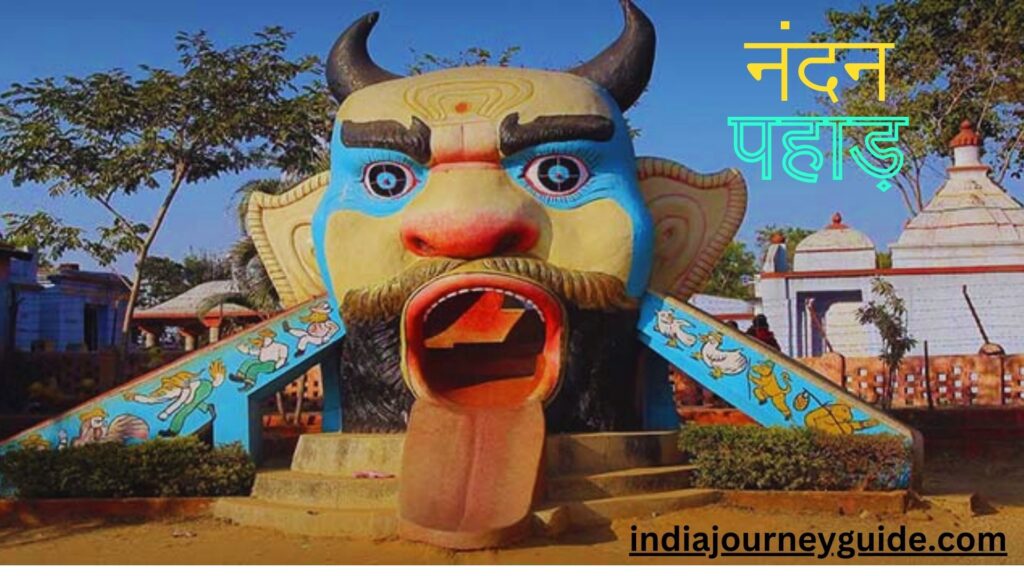
Overview of Nandan Pahar
In the Jharkhand state of India, the Nandan Pahar amusement park is situated on a hill in the Deoghar district. It is well-known for being a picnic location with a variety of activities for everyone. You can go boating in the area, enjoy a fun trip on a joy ride, or pray at the Nandi Temple. Nearby communities bring people of all ages to the park on a regular basis since it offers something for everyone. Sunrises are visually stunning because they illuminate every part of Nandan Pahar as the rising sun sets. As the sun sets and the starry heavens take over, sunsets are also captivating.
Nandan Pahar is made out of a garden and a pond, and it acts as an amusement or leisure park with various joy rides to enjoy among the beautiful greenery. It is also necessary to tour the park’s theme houses. You will feel young again in this place, where your childhood fancies will come to life. In the area, the Nandi temple, which is perched atop Nandan Pahar, is well known. The Jharkhand State Tourism Development Corporation oversees and advertises Nandan Pahar. Nandan Pahar is a must-see if you are traveling to Deoghar this year.
5. Lodh Waterfall

Overview of Lodh Waterfall
Lodh Waterfall Jharkhand: Popular waterfall Lodh Falls is situated in Jharkhand, India. It is located 195 kilometers from Ranchi and close to the village of Burudih in Jharkhand’s Latehar district. The waterfall offers a calm and beautiful environment and is encircled by verdant woodlands.
The river Burha, a tributary of the South Koel River, forms Lodh Falls. It is one of the highest waterfalls in Jharkhand and the 21st highest waterfall in the nation, plunging from a height of about 143 meters (470 feet). The place is even more beautiful by the hazy atmosphere created by the pouring rivers.
Visitors can take in the beautiful grandeur of the waterfall by standing on the viewing platform built near it. Observing the waterfall’s majesty as it cascades into a pool beneath is possible from the platform. Picnics and nature hikes are also highly recommended in the nearby area.
One can travel to the Latehar district, which has good road connectivity, in order to reach Lodh Falls. You can go around 25 km from Latehar and 195 km from Ranchi to the waterfall by hiring a private vehicle or local transportation. When making travel plans, it’s a good idea to check the weather because strong monsoon rains can make the roads treacherous and challenging to drive on.
Jharkhand’s Lodh Falls is a well-liked tourist destination because of its serene atmosphere and stunning natural surroundings. For those who love the outdoors and want to get away from the bustle of the city, this place is a must-see.
Best times of year to go to Lodh Falls
The post-monsoon and winter months, from October to February, are the ideal times of year to explore Jharkhand’s Lodh Falls. The comparatively cold and nice weather at this time of year makes it more pleasurable to explore the outdoors and take in the breathtaking views of the waterfall.
It is noteworthy that a visit to Lodh Falls during the monsoon season (June to September) may be hazardous because of the likelihood of landslides and excessive rainfall. Additionally, the surface can get slick, making it challenging to get to the waterfall. For a safer and more pleasurable experience, it is therefore advised that you schedule your visit during the suggested seasons.
6. City Park, Bokaro
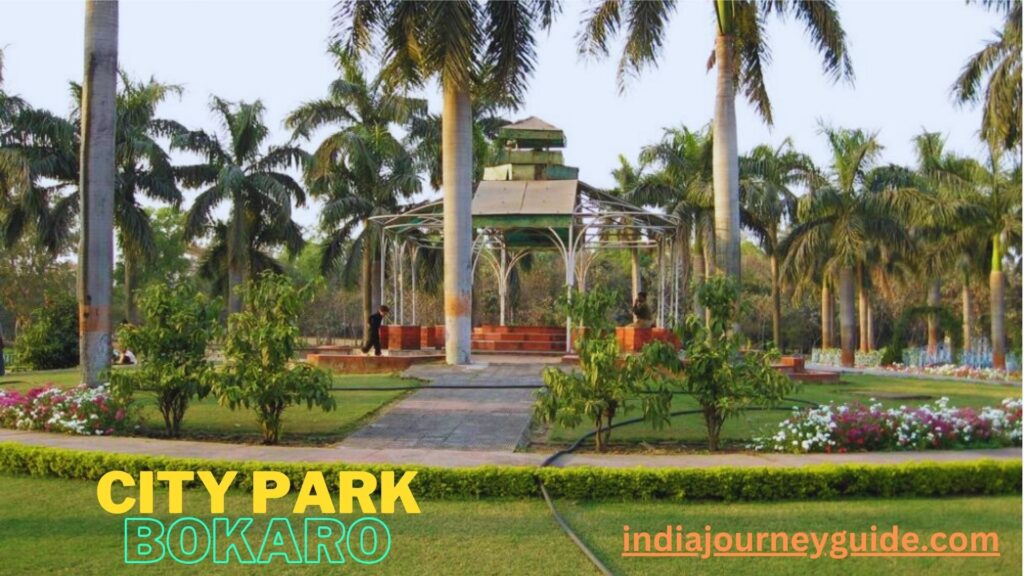
Overview of City Park
In the Indian state of Jharkhand, City Park is a well-known urban park situated in Bokaro Steel City. This expansive man-made park is well-known for its verdant surroundings, man-made lake, and small island. The park is a favorite location for early walkers, nature lovers, and picnickers since it offers a calm haven within the busy metropolis and is filled with lush vegetation, well-kept gardens, and walkways. Its aesthetic appeal is further enhanced by the presence of a Japanese garden.
The park contributes to the social fabric of Bokaro Steel City by acting as a location for a range of cultural and social events. With kid-friendly activities and quiet areas for senior citizens, it’s a great place for families to spend quality time together. Due to its boating amenities, the park is popular with both locals and tourists looking to unwind in the great outdoors or partake in light recreational activities.
7. Giridih, Jharkhand

Overview of Giridih
In the Indian state of Jharkhand, the town of Giridih is well-known for its picturesque scenery, deep forests, and rich cultural legacy. It is well-known for its abundant coal deposits and industry, and it houses the Giridih district headquarters. There are a lot of coal mines in the region, which is surrounded by hills. Giridih is regarded as a hub for the Jain community as well because it is home to Parasnath Hill, a prominent temple and site of pilgrimage. This temple bears the name Parshvanatha, after the 23rd Tirthankara of Jainism. The area has a peaceful blend of the untamed mountains, scenic splendor, and a sense of spirituality.
Giridih is a beautiful place to trek and explore because of its landscape, which is characterized by undulating rocky hills and rich subtropical woods. The people of this place live their daily lives as a rich cultural tapestry, enthusiastically celebrating a variety of festivals. The educational infrastructure of Giridih is also expanding, with a number of institutions meeting the demands of the local community. Because of the area’s pristine natural surroundings, ecotourism is also growing there.
8. Birsa Zoological Park, Jharkhand
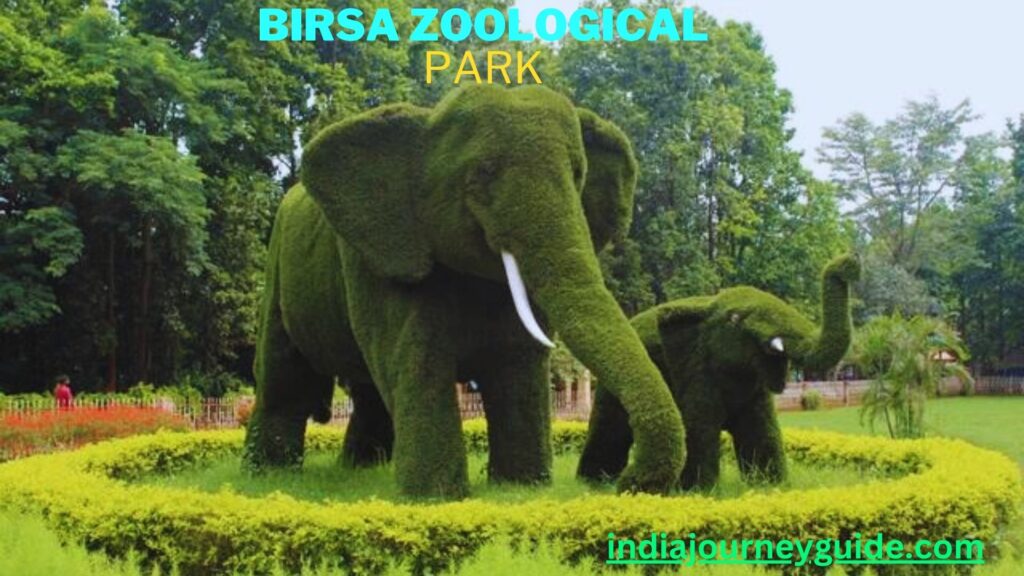
Overview of Birsa Zoological Park
Situated in Ranchi, Jharkhand, India, Birsa Zoological Park, also called Birsa Jaivik Udyan, spans 104 hectares of natural forests. It offers an amazing fusion of man-made landscapes and natural beauty, serving as a natural habitat for various plant and animal species. The park is a center for study, education, and conservation and is named for Indian tribal freedom hero Birsa Munda. A variety of animal species, including tigers, lions, hyenas, and numerous deer species, can be seen by visitors in their lifelike cages.
The park is split into two areas: one is designated for wild animals and is larger, housing an aviary and medicinal plants. Since the zoo offers educational programs, it’s a great place for wildlife lovers and school field excursions. It is especially well-known for its “Safari Tours,” which provide up-close looks at animals in their natural habitats.
9. Massanjore Dam, Jharkhand
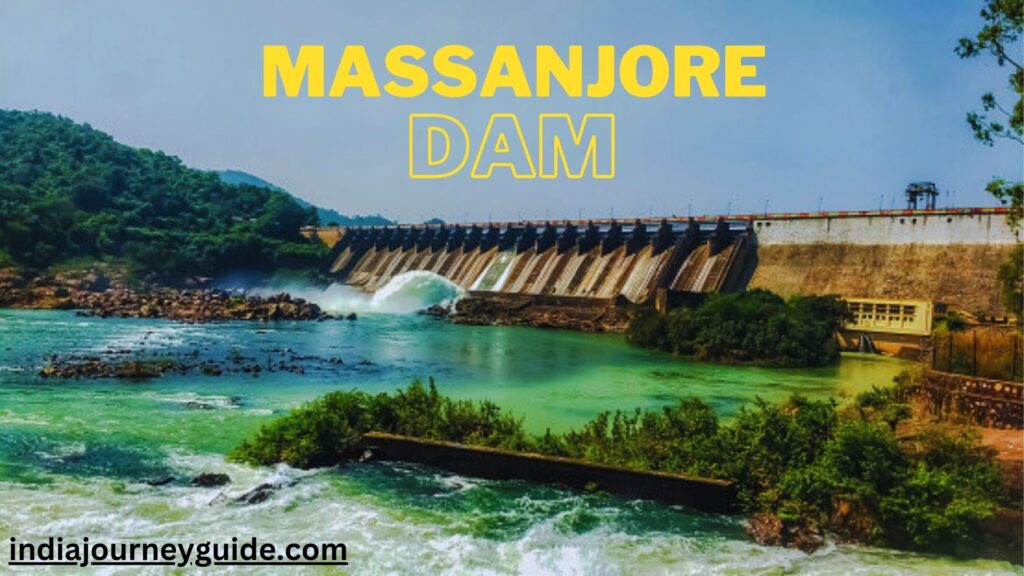
Overview of Massanjore Dam
Situated near Dumka, Jharkhand, India, Massanjore Dam, more commonly referred to as Canada Dam, is a notable engineering achievement. Constructed in 1956 with the assistance of a Canadian engineer, it symbolizes Canada’s bilateral goodwill with India. The dam, which was built on the Mayurakshi River, greatly enhances the area’s ability to produce hydroelectric power and use irrigation. The hillocks and rich flora that abound in the gorgeous surroundings make it a well-liked tourist attraction. The peaceful reservoir of the dam covers a large area and provides a calm diversion from the busy life of the city. Visitors can enjoy boating sports while taking in the captivating views of the surrounding hills and forests. Another activity that visitors can partake in is bird watching, since the dam region draws a variety of bird species.The infrastructure itself is a monument to the long-lasting advantages of multinational cooperation, showcasing mid-century design. Guest homes and other hospitality services are offered to those who wish to extend their stay and experience the serene atmosphere of the dam even more.
10. Betla National Park, Netarhat
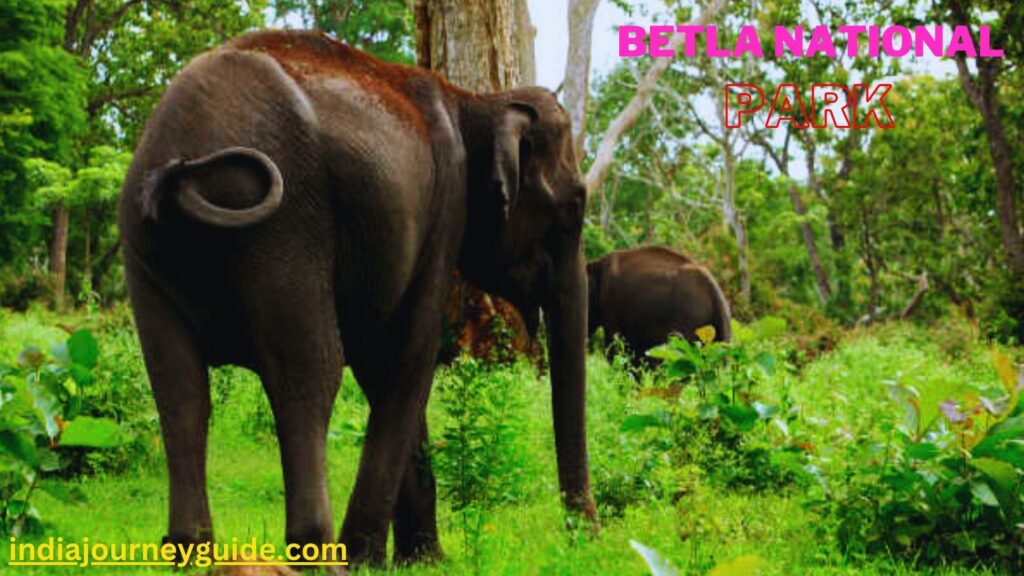
Overview of Betla National Park
West of Ranchi in Jharkhand, in the charming Palamau district, is the stunning Betla National Park, which is situated amidst the rugged terrain. The thickets of the forest are home to free-ranging wild elephants, and the rich variety of flora and animals is sure to captivate any visitor. A visit to this historic region of Jharkhand will be worthwhile even though there aren’t as many tigers there because it offers a greater understanding of the state’s unique tribal heritage. The acronym for “Bison, Elephant, Tiger, Leopard, and Axis” is “Betla.” The existence of two forts on the park’s grounds sets it apart from the others. The main draws here are the up-close views of the wildlife.
One of the most popular national parks in the North East, the park covers over 979 square kilometers, with the main section spanning 232 square kilometers, and is one of India’s first nine tiger reserves. The Betla National Park is home to an enormous variety of species because of its diverse habitat. There are lush sal and bamboo trees in the park.The northern portion of the forest reserve is dominated by Bel Aegle marmelos, whereas the southern side of the woodland is primarily composed of Sal trees. Little hills like the Netarhat, Huluk, Murhu, and Gulgul indicate the park’s sloping landscape. The park is a fascinating area to visit, with several waterfalls and hot springs located inside.